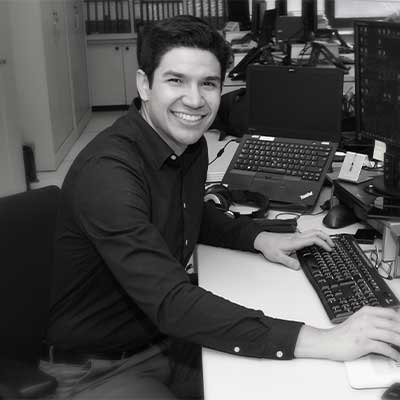
With the world’s population skyrocketing and, by default, food consumption rising at an unparalleled speed, natural resources are shrinking. This is, literally, just the tip of the iceberg with regards to the many issues that public administrations are dealing with in times of climate change. The issue unarguably affects all aspects of life and curbs water accessibility, and food production, among many other areas.
Average global surface temperatures and sea-levels have gone up considerably, so did the number of solutions trying to mitigate such effects. In an attempt to tackle contemporary problems stemming from large crowds living in relatively small spaces, smart solution providers have stepped in by introducing innovative solutions, such as smart waste management, intelligent industrial LED lightings, smart irrigation systems, and energy-efficient buildings, to name but a few. These solutions can be taken up by public service providers in an attempt to improve densely populated urban areas, whilst also protecting the environment.

A breeze of fresh news (and air)
As we look into the digital future, with technologies such as big data, AI, robotics, and blockchain shaking up all types of industries and many aspects of our daily lives and thereby, becoming the backbone of our social sphere, ICT-based solutions present themselves as the answer to many contemporary issues. Alone, air pollution from outdoor sources, for instance, annually takes the lives of 3.3 million people worldwide on average and the rates are likely to double by 2050 even if every country on the planet takes on mandatory air-quality legislation.
One of the biggest air pollution culprits is the burning of fuel, both for heating and cooking, as well as intensive agricultural activities, which means the problem takes unparalleled proportionality as population drastically grows in urban areas. In order to reduce air pollution, cities need to understand its patterns, but traditional monitoring stations are either too unreliable or sparse to track down all the many contaminants and accurately forecast air pollution levels. Not to mention the financial burden that the setup of such stations can have on – too often – scarce public resources.
Taking that into account, FIWARE Foundation’s Gold member Bettair Cities has developed an AI-based, low-cost sensor-platform solution to map air quality in real-time and with a promised +90% accuracy rate (fairly close to what large and expensive air monitoring stations deliver) where traditional air quality sensors stick to a 60% precision percentage. Based on the large deployment of outstandingly accurate gas sensors – by using an advanced post-processing algorithm – this ‘Powered by FIWARE’ solution provides a highly efficient and large-scale pollution-mapping tool for big cities.
The solution’s AI-powered sensors accurately measure 10 air quality indicators, including nitric oxide, nitrogen dioxide, carbon monoxide, ozone, and particulate matters, in the same unit and cost, on average, a fraction of what similar technologies charge.
“Due to the fact that air quality can vary considerably in space and time, dense networks of low-cost sensors have come to be prominent for air quality monitoring since they provide useful data where it is needed the most: adjacent to residents and not somewhere perceived as remote or irrelevant. All in all, the benefits are endless: our technology permits quantifying the impacts of pollution mitigation actions, provides answers to relevant questions about air pollution, establishes more accurate modelling – and forecasts at a local scale -, finds potential air pollution ‘hot spots’, and increases the ability of links between air quality and human health to be identified” says Leonardo Santiago Montilla, CTO and Co-founder at Bettair Cities.
Beyond sensor-based data
The platform also measures environmental variables such as temperature, humidity and atmospheric pressure. It can also measure noise pollution in decibels and can be run on solar power. Beyond the hardware, Bettair’s air quality monitoring system incorporates a platform as a solution (PaaS) that stores and processes the raw data collected by the sensors. The company is also adding an algorithm that incorporates additional external data from partners, such as global weather forecast providers, to enable up to five days of air quality forecasts. What makes this solution really stand out is its ‘near’ real-time feature as it can deliver data every five minutes. Moreover, it is also very easily implemented: Bettair Cities uses electrochemical sensors that can be installed on city fixtures such as lamp posts, for example.
Thanks to FIWARE technology, Bettair Cities can provide customers with a whole platform, not just the data provided by the sensors. For instance, via the heat maps, the solution can show in real-time the status of the air and air quality at a hyper-local level. The solution is scalable, flexible and adaptable to any city so that they can respond to spikes in pollution levels and immediately act to mitigate them. Moreover, in the very near future, these heat maps can help citizens to plan their journey to avoid the most populated routes via an app.
The power of real use cases
The company has pilots integrating a LoRaWAN module (long-range, low-power wireless technology) in the node and it is currently being tested in Southampton, UK and Santander, Spain. Also, another pilot is being carried out in New York together with Columbia University. Large scale pilots are currently planned to start in late 2020 in Barcelona and Roma. The company is holding further municipal trials this year, before fully going into the market next year.
Creating climate-resilient environments surely isn’t a simple task but, with the help of IoT and Open Source technologies, devices such as lamp posts – as seen in the Bettair Cities use case – can be further used for environmental gains. In our Climate Change Booklet, FIWARE also features nearly 30 ‘off the shelf’ disruptive solutions from the FIWARE Community that have become vital to the fight against climate change and are, ultimately, setting common standards for Smart Cities.
Collaboration is at the forefront of the smart solutions movement
Bettair Cities is just one outstanding example of how the FIWARE Community is helping cities to deliver their digital vision, focused on sustainability, the efficient management of public services and with a citizen perspective. Based on an Open Source approach, the FIWARE Community is driving the development of smart solutions in a faster, easier, interoperable and affordable way that avoids vendor lock-in scenarios. This is only possible due to the ever-growing participation of internal and external contributors who, together, update and improve the platform.
The concept works because the same contributors then benefit from the work they play a part in. When solution providers can easily build solutions on top of a free and open platform, available financial resources can then be used to boost other aspects of their businesses such as talent acquisition, product line expansion, and the launch of marketing campaigns. Moreover, there are technological gains: as a free software, FIWARE gives developers access to the source code, allowing them to enhance the application performance, add new features, and fix errors, for everybody’s benefit.
By making computing safer, interoperable and more democratic, users by virtue hold on to a sense of contributing to a greener and better world. It is this compelling purpose that brings the FIWARE Community to combine their efforts and experiences, and we are not just talking developers here: public administrators, policymakers, standardization entities, testers, writers, engineers, marketers, and designers are all contributing with their time and expertise, reacting to challenges at an incredible speed. FIWARE also collaborates with a multitude of other Open Source communities such as Linux, OpenStack, and Red Hat to provide further value for our members, users and partners.
Interoperability is of essence: FIWARE’s unwavering approach to international, open standards
As important as making the most of Open Source technologies is, using such technologies in a standardized way is of higher importance. In order to successfully make it into the smart solutions market today, new services and applications must be able to securely communicate with other services and devices, traversing a multitude of infrastructures and systems. This way, when competing in the Open Source market, business leaders, developers, researchers, entrepreneurs or public administrations can clearly benefit from knowing that their solutions can be connected with other applications or pieces of software already widely available, or that they can replicate them for multiple customers with rather low adaptation costs.
That ability of co-existence and interconnection is what interoperability is all about. By being able to publish and use data in a standardized way, technology users and providers drive new business models, create open ecosystems and help public administrations to deliver more effective public services and hence, boost citizens’ living standards. An important element of data models and infrastructures worldwide, common standards are at the heart of platforms and digital infrastructures, enabling interoperability and portability of solutions. By defining and implementing recognized standards that everybody can access, understand and easily implement when building solutions, FIWARE has been accelerating the maturity and adoption of Open Source standards.
Together with its members, FIWARE has already spearheaded several standardization activities, for example, with ETSI (NGSI-LD API specifications), W3C (Web of Things), GSMA (IoT Big Data Ecosystem project), or TM Forum, toward developing uniform data models for areas of application such as smart parking, smart lighting, smart waste management and many more. Only by using uniform interfaces and data models, it is possible to avoid data silos and use public funding efficiently, and hence, create sustainable, smart and resilient cities at an unprecedented speed.
Leonardo Santiago Montilla is an Electronic and Telecommunications Engineer with a Masters in Electronics with honours from Polytechnic University of Catalunya (UPC). As project engineer, he has experience in wired and RF communications protocols. He has experience in technical development of projects related to electronics, radio-frequencies and signal processing. In his early career, here specialised in hardware and firmware development for 8-32 bit and ARM micro-controllers and programmable logic devices, multi-platform software development, product design and system validation. He has been in charge of complex hardware/firmware developments related to Wireless Sensors Networks in the fields of agriculture, renewable energy systems, and air quality. He also counts with many years of experience managing EU funded projects under different schemes such as FP6, FP7 and H2020. Currently he is responsible for the development of the bettair® platform.
————————————————————————————————————————————-
*Founded in 2016 by Atos, Engineering, Orange and Telefónica, FIWARE Foundation is a non-profit organization that drives the definition and encourages the adoption of open standards (implemented using open source technologies) that ease the development of smart solutions across the fields of Smart City, Smart Energy, Smart Agrifood and Smart Industry, based on FIWARE technology.












